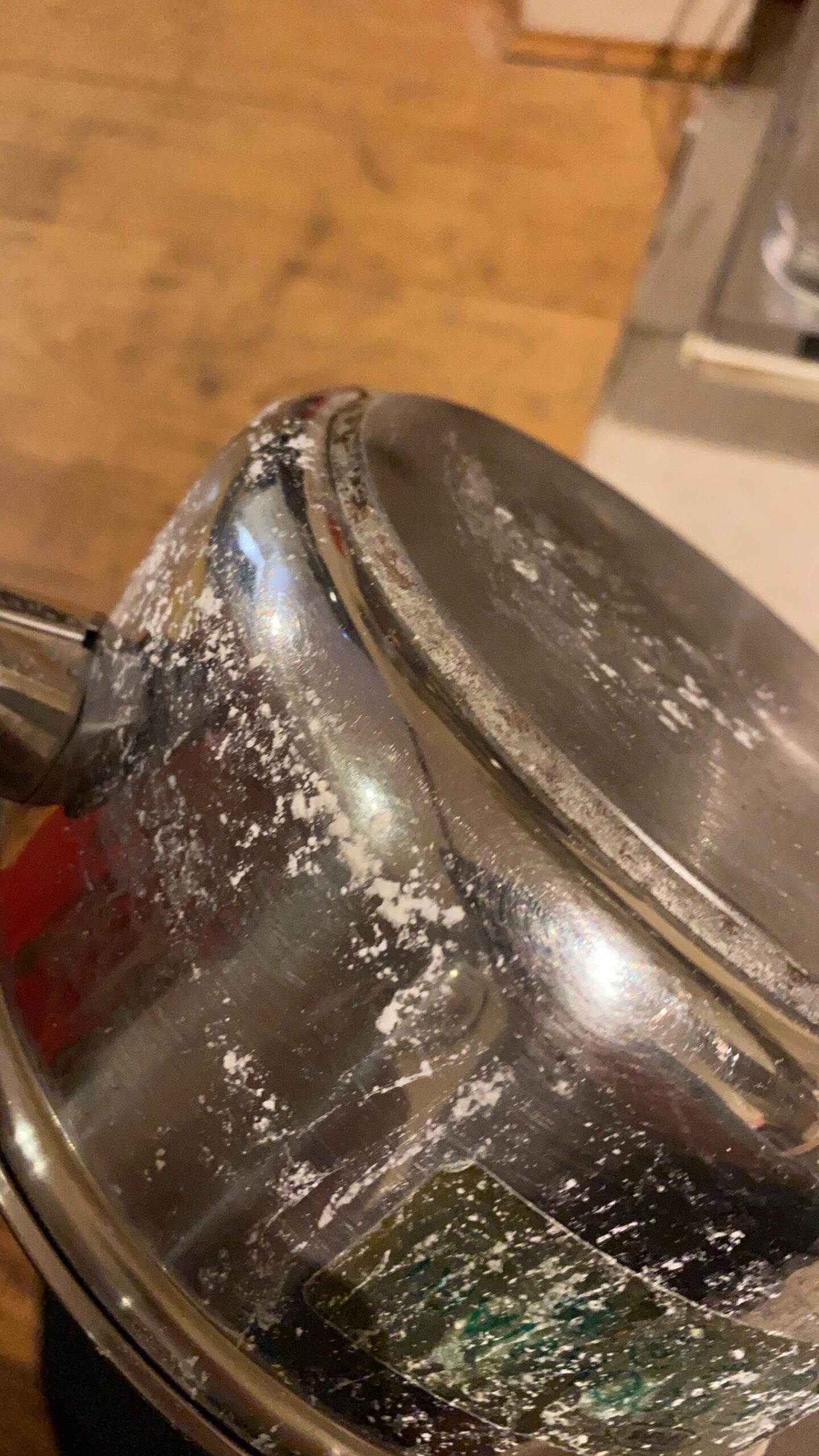
If you’ve ever opened your dishwasher after a cycle only to find a frustrating white residue coating your dishes, you’re not alone. Dealing with this pesky issue can be a real headache, but fear not! In this article, you will learn valuable tips and tricks on how to troubleshoot and successfully remove white residue from your dishwasher, leaving your dinnerware sparkling clean and ready for use. From simple home remedies to preventative measures, we’ve got you covered. Say goodbye to that pesky white residue and hello to spotless dishes!
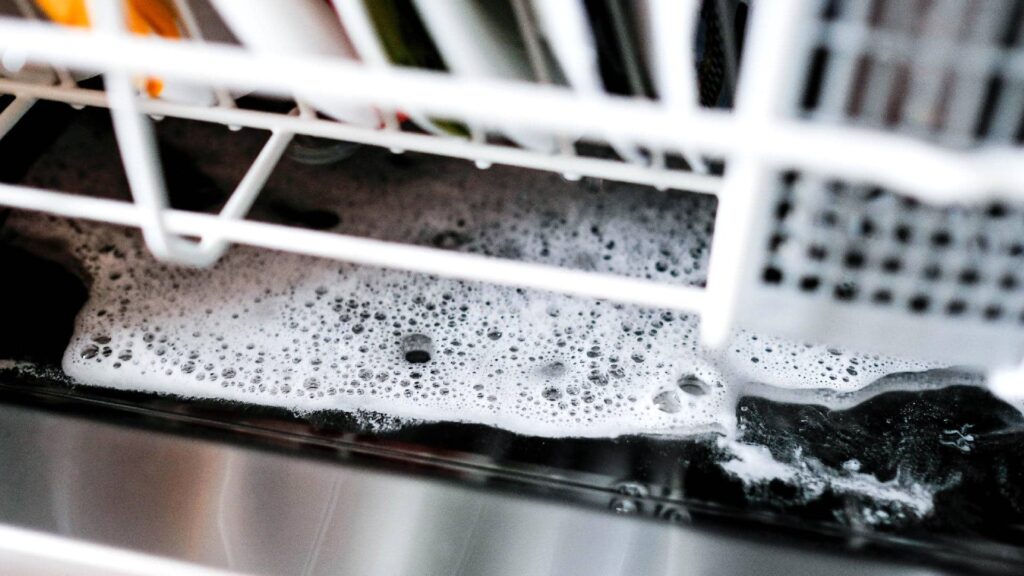
This image is property of paradiseapplianceservice.com.
Understanding the causes of white residue in your dishwasher
Hard water mineral buildup
One of the common causes of white residue in your dishwasher is hard water mineral buildup. When your area has hard water, it contains a high concentration of minerals like calcium and magnesium. These minerals can accumulate over time and form a white residue on your dishes and dishwasher. This can be especially noticeable on glassware, leaving them looking dull and hazy.
Excess detergent usage
Using too much detergent in your dishwasher can also lead to white residue. While it may seem logical to add more detergent for cleaner dishes, it can actually have the opposite effect. Excess detergent can leave behind a powdery or chalky residue on your dishes, as well as on the interior of your dishwasher. It is important to follow the recommended dosage provided by the detergent manufacturer.
Cleaning product residue
If you use cleaning products that are not specifically designed for dishwashers, they can leave behind residue. Some cleaning products may contain ingredients that are not easily rinsed off or may react with the minerals in hard water, creating a white film on your dishes and dishwasher. It is important to use dishwasher-specific cleaning products to avoid this issue.
Improper loading of dishes
Another factor that can contribute to white residue is improper loading of dishes. When dishes are not loaded correctly, water may not be able to reach all areas during the wash cycle. This can result in detergent not being properly rinsed away, leading to residue. It is important to load dishes in a way that allows for proper water circulation and spray.
Preventing white residue in your dishwasher
Use a water softener
Installing a water softener can help prevent mineral buildup in your dishwasher. A water softener works by removing the minerals that cause hard water, leaving you with softer water that is less likely to leave behind residue. This can help improve the overall performance of your dishwasher and lead to cleaner dishes.
Limit detergent usage
To avoid excessive detergent residue, it is essential to use the correct amount of detergent. Refer to the instructions on the detergent packaging and measure out the recommended amount for your dishwasher. Using too much can result in buildup and leave white residue behind.
Choose suitable dishwasher detergent
Not all dishwasher detergents are created equal. Some may be better suited for hard water, while others are designed for use in areas with soft water. It is important to choose a dishwasher detergent that matches your water hardness for optimal cleaning performance. Look for detergents specifically labeled for use in hard water areas to help prevent white residue.
Avoid using rinse aid excessively
While rinse aid can improve drying and help prevent spots and streaks on your dishes, using too much can contribute to white residue. Rinse aid is designed to be used sparingly, and using it excessively can result in an unwanted buildup. Follow the recommended dosage provided by the dishwasher manufacturer and adjust as needed to find the right balance for your dishwasher.
Load dishes properly
Properly loading your dishes is crucial for preventing white residue. Make sure to leave enough space between dishes for water to circulate freely during the wash cycle. Avoid overcrowding and ensure that dishes are not blocking the spray arms or preventing them from rotating. This will help ensure that all dishes are thoroughly cleaned and minimize the chances of white residue forming.
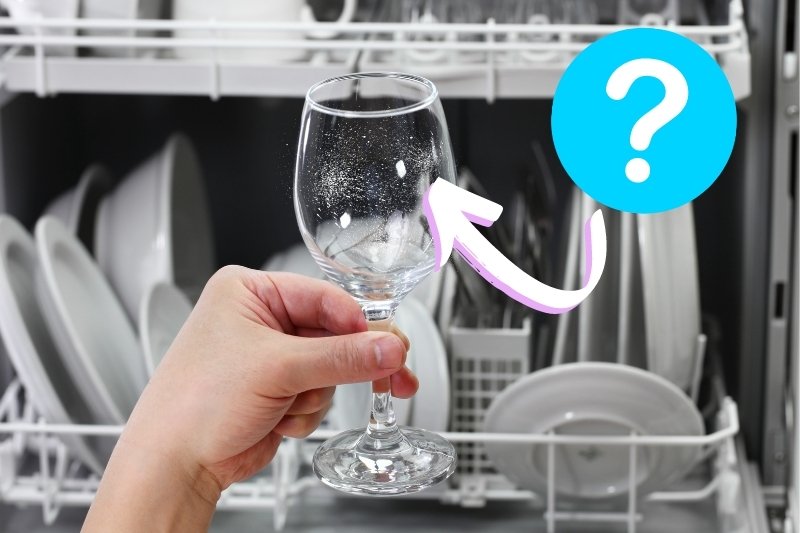
This image is property of inthewash.co.uk.
Cleaning the dishwasher interior
Inspect and clean spray arms
Over time, food particles and mineral buildup can clog the spray arms in your dishwasher. This can result in reduced water flow and poor cleaning performance. Regularly inspect the spray arms and remove any debris or buildup. You can use a toothpick or small brush to clean out the spray arm nozzles and ensure that water can flow freely.
Remove and clean filter
The dishwasher filter plays a vital role in trapping food particles and preventing them from clogging the system. However, if the filter becomes clogged or dirty, it can contribute to white residue. Depending on your dishwasher model, locate and remove the filter. Rinse it under running water to remove any debris, or follow the manufacturer’s instructions for proper cleaning.
Clean the dishwasher door and gasket
The dishwasher door and gasket can also accumulate residue over time. Wipe down the door and gasket with a damp cloth or sponge and a mild cleaner to remove any buildup. Pay close attention to the area around the gasket, as residue may accumulate there. Regular cleaning of the door and gasket will help prevent the transfer of white residue onto your dishes.
Check and clean the float switch
The float switch is a safety feature in your dishwasher that controls the water level during the wash cycle. If the float switch becomes stuck or malfunctions, it can affect the amount of water in the dishwasher and lead to residue. Locate the float switch (consult your dishwasher’s manual if needed) and ensure that it moves freely. Clean any debris or buildup around the float switch to ensure smooth operation.
Flush the dishwasher with vinegar
Vinegar is a natural cleaning agent that can help remove white residue and deodorize your dishwasher. To flush the dishwasher with vinegar, place a dishwasher-safe cup filled with white vinegar on the top rack. Run a hot water cycle without any dishes or detergent. The vinegar will help break down residue and eliminate odors, leaving your dishwasher clean and fresh.
Cleaning the dishwasher exterior
Wipe down the control panel and buttons
Regularly wiping down the control panel and buttons on your dishwasher is essential for maintaining a clean exterior. Use a soft cloth or sponge dampened with mild soapy water to gently wipe away fingerprints, grease, and residue. Take care not to use excessive water or harsh cleaners, as they can damage the control panel.
Clean the door and handle
The dishwasher door and handle are often touched with dirty hands, leading to the accumulation of dirt and grime. To clean the door and handle, use a mild cleaner or dish soap mixed with water. Apply the mixture to a soft cloth or sponge and gently scrub away any dirt or residue. Rinse with clean water and dry with a soft cloth.
Remove dirt from the rubber seal
The rubber seal around the dishwasher door can trap dirt and residue over time. To remove dirt from the rubber seal, use a toothbrush or soft brush dipped in a mixture of water and mild dish soap. Gently scrub the seal, paying attention to any hard-to-reach areas. Rinse with clean water and wipe dry.
Polish the stainless steel surface (if applicable)
If your dishwasher has a stainless steel surface, polishing it regularly can help maintain its shine and prevent the buildup of residue. Use a stainless steel cleaner or a mixture of vinegar and water to clean the surface. Apply the cleaner or mixture with a soft cloth, following the grain of the stainless steel. Wipe off any excess cleaner or moisture with a dry cloth to prevent streaks.
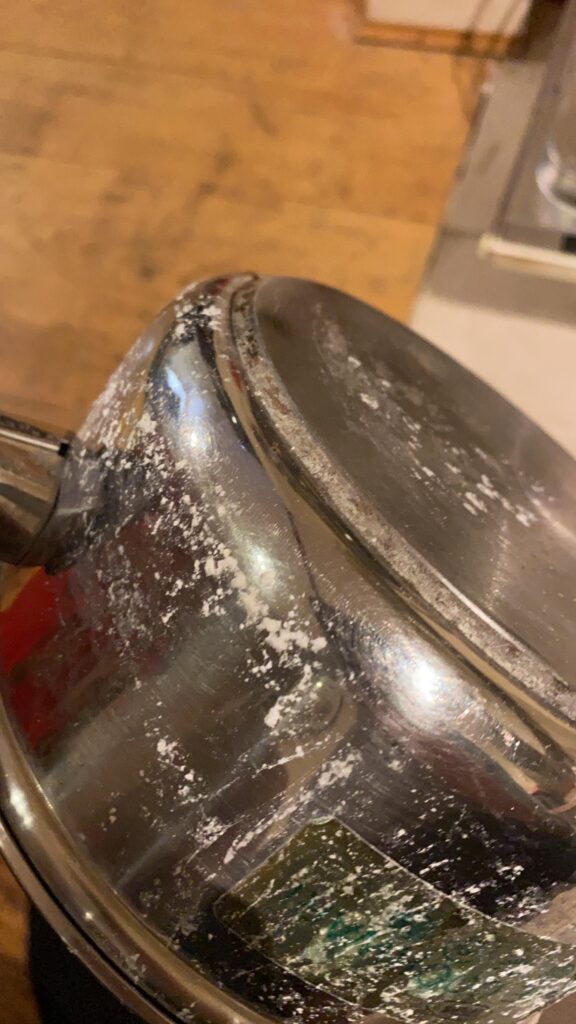
This image is property of i.redd.it.
Using natural remedies for white residue removal
Lemon juice
Lemon juice is a natural acid that can help remove white residue from your dishwasher. Squeeze the juice of a lemon and pour it into a dishwasher-safe bowl. Place the bowl on the top rack of your dishwasher and run a hot water cycle. The lemon juice will help break down and remove the residue, leaving your dishwasher clean and fresh.
Baking soda
Baking soda is another versatile natural cleaner that can be used to remove white residue from your dishwasher. Sprinkle a generous amount of baking soda on the bottom of your dishwasher and run a hot water cycle. The baking soda will help break down the residue and eliminate odors, resulting in a cleaner dishwasher.
Vinegar
As mentioned earlier, vinegar is a powerful natural cleaner that can be used to remove white residue. You can use vinegar in various ways to clean your dishwasher, such as flushing it with vinegar or using vinegar as a rinse aid. Its acidic properties help dissolve residue and leave your dishwasher sparkling clean.
Citric acid
Citric acid is commonly used as an ingredient in dishwasher cleaning products due to its effectiveness in removing white residue. You can use citric acid in powder or liquid form to clean your dishwasher. Follow the instructions on the packaging for the correct dosage and method of use. Citric acid will help dissolve and remove stubborn residue, leaving your dishwasher looking and performing its best.
Cleaning the dishwasher heating element
Disconnect power to the dishwasher
Before cleaning the heating element, it is important to disconnect power to the dishwasher to prevent any accidents. Locate the circuit breaker in your home’s electrical panel that controls the dishwasher and switch it off.
Locate and inspect the heating element
The heating element is usually located at the bottom of the dishwasher tub. It is responsible for heating the water during the wash and rinse cycles. Inspect the heating element for any visible signs of buildup or residue. If you notice any significant buildup, it is time to clean it.
Clean the heating element
To clean the heating element, mix equal parts of water and vinegar in a spray bottle. Spray the vinegar solution onto the heating element, ensuring that it covers the entire area. Allow the solution to sit for a few minutes to break down the residue. Then, use a soft brush or cloth to gently scrub away the buildup. Rinse with clean water and wipe dry.
Reconnect power and test
After cleaning the heating element, carefully reconnect power to the dishwasher by switching the circuit breaker back on. Run a test cycle to ensure that the heating element is functioning properly and that no residue remains. Your dishwasher should now operate more efficiently and provide cleaner results.

This image is property of n3h9u7d3.rocketcdn.me.
Regular maintenance tips to prevent white residue
Run the dishwasher with vinegar or citric acid monthly
To maintain a clean dishwasher and prevent the buildup of residue, it is recommended to run a cleaning cycle using vinegar or citric acid once a month. This will help dissolve any residual residue, eliminate odors, and keep your dishwasher performing at its best. Simply place a dishwasher-safe cup filled with vinegar or citric acid on the top rack and run a hot water cycle.
Monitor the dishwasher’s water hardness
Regularly monitor the water hardness in your area and adjust your dishwasher settings accordingly. Some dishwashers have a water hardness selector that allows you to set the appropriate level. By ensuring that your dishwasher is set to the correct water hardness, you can prevent excessive residue and prolong the life of your dishwasher.
Clean the filter regularly
Cleaning the dishwasher filter on a regular basis is essential for maintaining optimal performance and preventing residue buildup. Refer to your dishwasher’s manual for instructions on how to remove and clean the filter. It is recommended to clean the filter at least once a month or more frequently if you notice a decrease in cleaning performance.
Inspect and clean the spray arms
Inspecting and cleaning the spray arms is another important maintenance task. Over time, food particles and minerals can clog the spray arm nozzles, resulting in poor water flow and residue buildup. Regularly check the spray arms for any blockages and clean them as needed. Use a toothpick or small brush to clear any debris from the nozzles.
Keep the dishwasher interior dry when not in use
To prevent the formation of white residue, it is important to keep the dishwasher interior dry when not in use. Make sure to open the dishwasher door after each cycle to allow moisture to evaporate. If possible, use a dish towel to wipe down the interior, especially around the gasket and door edges, before closing the dishwasher.
Calling a professional for assistance
When DIY methods fail
If you have tried the above methods to remove white residue from your dishwasher but are still experiencing the issue, it may be time to call a professional for assistance. A professional dishwasher technician will have the knowledge and expertise to diagnose the problem and provide an effective solution.
When there are underlying mechanical issues
White residue can sometimes be a symptom of underlying mechanical issues in your dishwasher. These issues may require repairs or replacement of faulty components. A professional technician will be able to identify and address any mechanical problems that may be causing the white residue.
Choosing a reliable dishwasher technician
When selecting a dishwasher technician, it is important to choose a reliable and experienced professional. Look for technicians who are licensed and insured, as this ensures that they have the necessary qualifications and can provide quality service. Consider checking online reviews and asking for recommendations from friends or family.
Getting cost estimates
Before hiring a dishwasher technician, it is a good idea to get cost estimates for the required repairs or service. Request quotes from multiple technicians and compare the prices and services offered. This will help you make an informed decision and choose the best option for your budget and needs.
By understanding the causes of white residue in your dishwasher and following the preventive measures mentioned, you can ensure that your dishwasher remains clean and free from residue. Regular maintenance and cleaning of both the interior and exterior of your dishwasher, as well as using natural remedies when needed, will help keep your dishes looking spotless and your dishwasher performing at its best. And in case of persistent issues or mechanical problems, don’t hesitate to reach out to a professional technician for assistance.
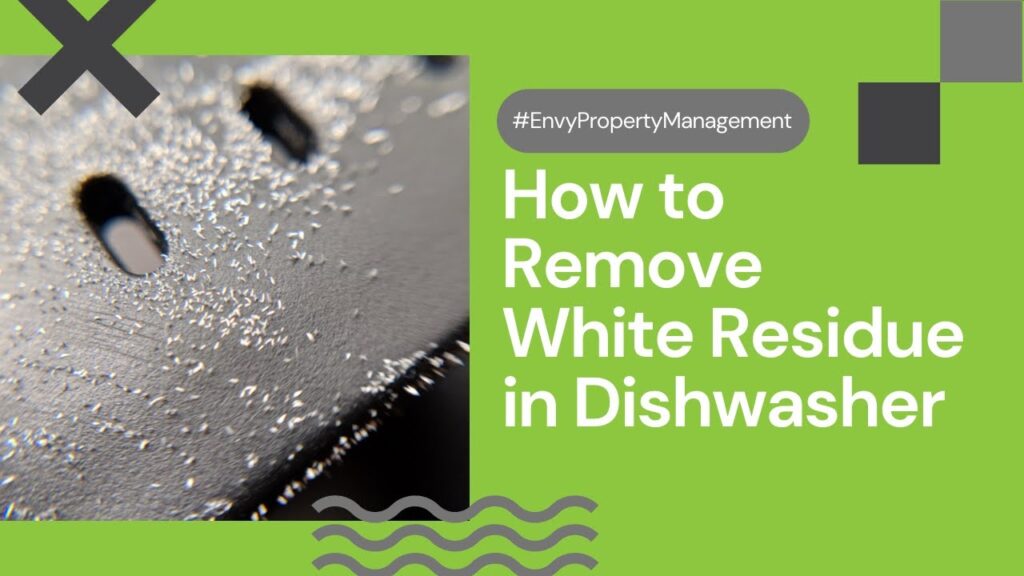
This image is property of i.ytimg.com.





